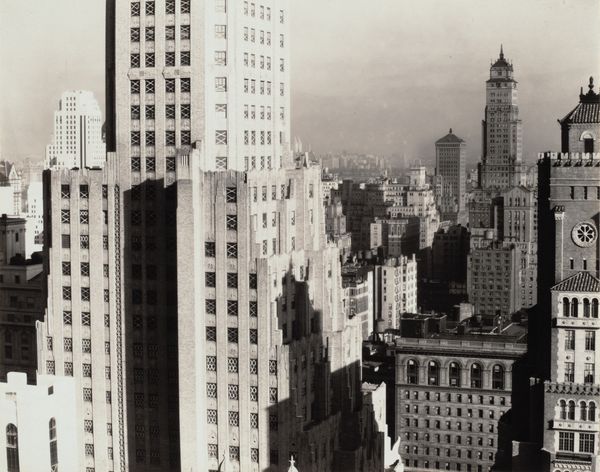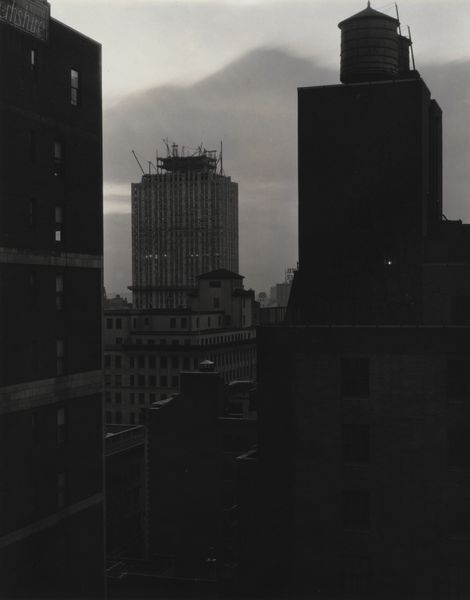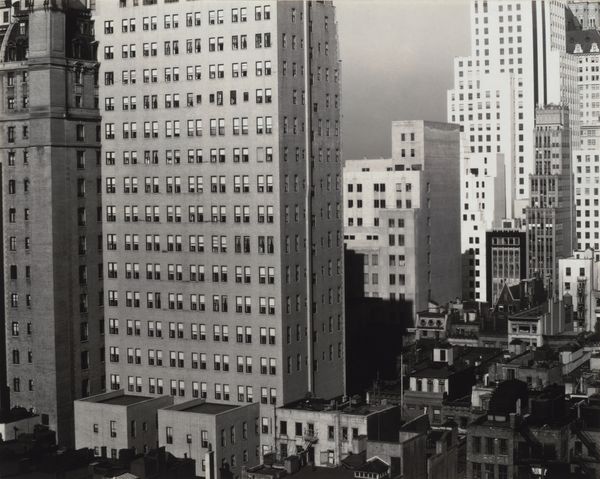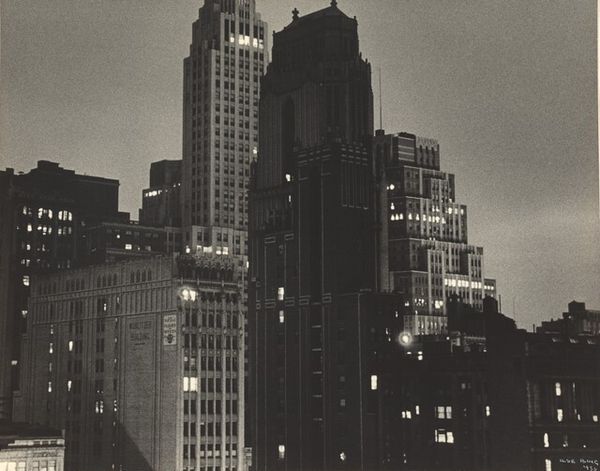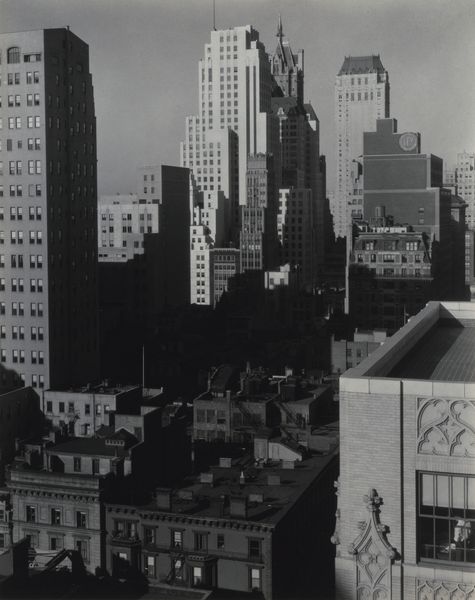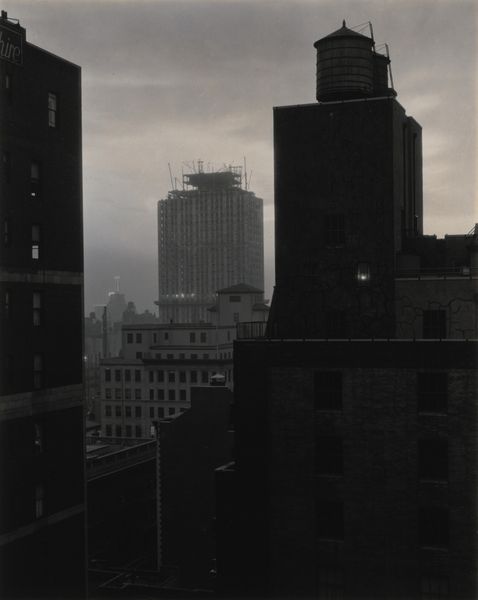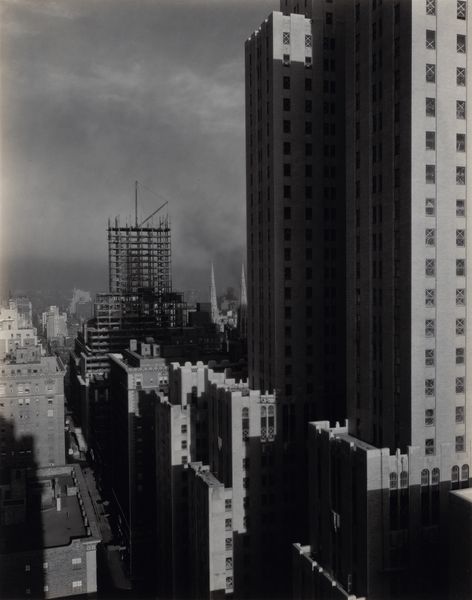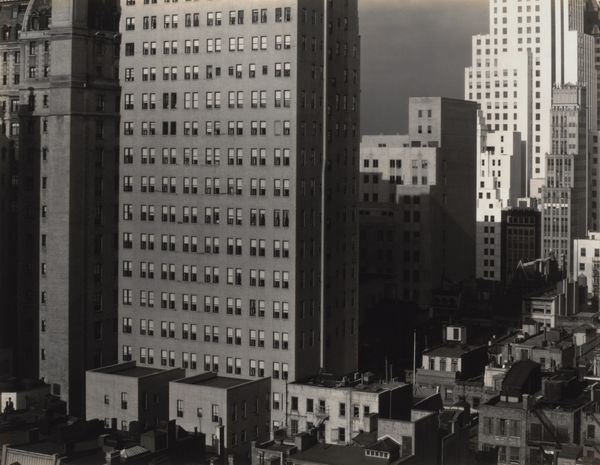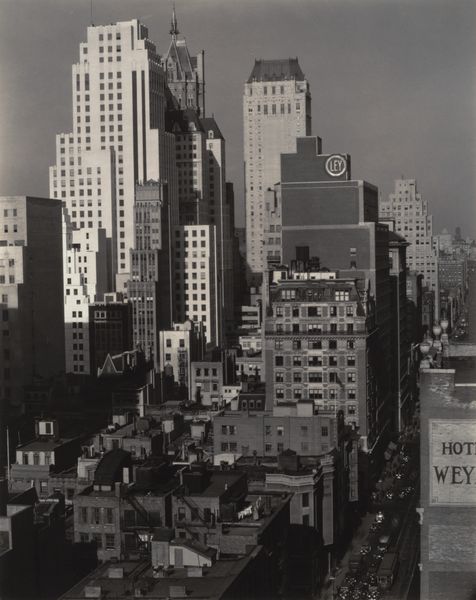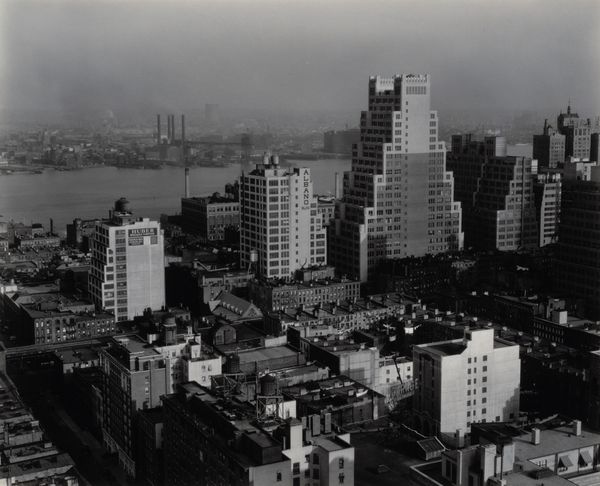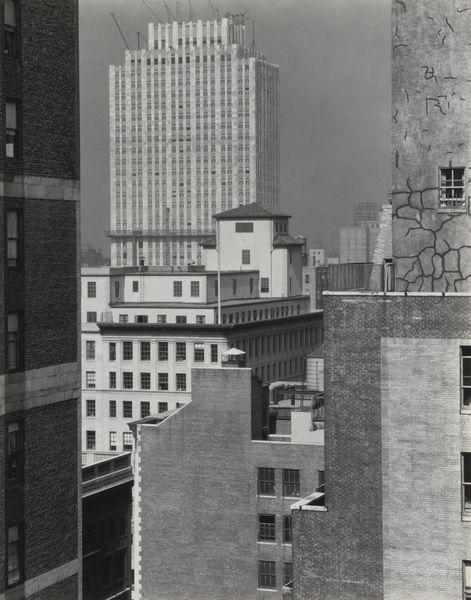
photography
#
precisionism
#
photography
#
black and white
#
cityscape
#
monochrome
#
modernism
#
monochrome
Dimensions: sheet (trimmed to image): 24.2 x 19 cm (9 1/2 x 7 1/2 in.) mount: 56.3 x 45.9 cm (22 3/16 x 18 1/16 in.)
Copyright: National Gallery of Art: CC0 1.0
Curator: Here we have Alfred Stieglitz's "From My Window at the Shelton, North," taken in 1931. It’s a black and white photograph of the New York City skyline, captured from his residence at the Shelton Hotel. Editor: It’s almost overwhelming, a brutal composition of towering geometries. The textures of the buildings feel rough, almost like exposed bone under the skin of the city. Curator: I see it more as a document of modernism's relentless push forward. The image captures the zeitgeist of a rapidly changing urban landscape. There's an audacity, but also perhaps a critique embedded in the scale and repetition. How do you read its social context through materiality? Editor: The photograph immediately brings to mind labor, the sheer manpower required to erect these behemoths. The photograph foregrounds the social dimensions of the raw materials: steel, glass, concrete... All obtained via resource extraction and labor often happening far beyond Stieglitz’s Shelton Hotel window. This division of creation and experience makes the image profoundly political. Curator: Absolutely. And Stieglitz, with his position, both benefits and critiques it through this photograph. His perspective, quite literally 'from the window', reminds us of the lens through which art is often viewed – from a place of relative privilege, which, in itself impacts how we understand the narratives it presents. What narratives are centered, and which are erased? Editor: I would add to this consideration the tools and methods used to construct these buildings: the quarries, the factories, the railroads involved are omitted, hidden below surface-level interpretation, reinforcing the hierarchical nature of image-making. The materiality of urban space always speaks of social realities. Curator: The photograph does spark those uneasy questions. Yet its strength, paradoxically, also lies in that uncomfortable duality – acknowledging its positionality while still providing space for a necessary conversation about our present, the exploitation and unequal access. Editor: Agreed. It compels us to consider the network of resources that literally underpin any built environment and our own perspectives and interpretations within such networks. Curator: Precisely. Thank you for sharing your insights on that front, allowing for a more rich consideration. Editor: My pleasure. The city and its creations always conceal a world of production.
Comments
No comments
Be the first to comment and join the conversation on the ultimate creative platform.
